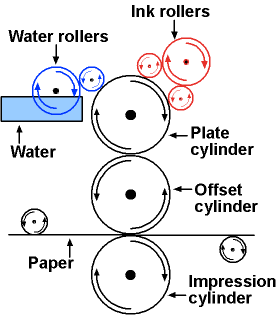World War Two
Published 4 Dec 2021The Soviets have launched offensives on the entire eastern front and by now hundreds of thousands of men are surrounded at Stalingrad. The Japanese win a battle at sea, but are losing a war of attrition.
(more…)
December 5, 2021
Axis Armies Facing Starvation – WW2 – 171 – December 4, 1942
Will publishers move back to actually printing their own books?
In the latest SHuSH newsletter, Kenneth Whyte explains some of the issues publishers face in getting their books printed, as most publishers outsourced the actual physical work of printing and binding many years back:
I had a serious conversation with another publisher this week about the need for publishers to start printing their own books.
Those familiar with publishing history will know that from the fifteenth to the nineteenth century, most publishers printed their own books. Ownership of a press, as much as anything, was what made a publisher a publisher. In the course of the twentieth century, it was decided that publishing books and printing books were different businesses. Virtually all publishers outsourced their printing to high-volume printing specialists who were constantly upgrading their equipment, and who, theoretically, at least, were better, faster, and cheaper than in-house printing operations.
[…]
Apart from that handful of artisans, today’s book publisher can no more operate a printing press than a backhoe. He or she outsources printing to specialists on a project-by-project basis.
The options for large-scale quality printing are increasingly scarce, thanks to a lot of consolidation in the printing business. Smaller shops (like the artisans) only do paperbacks; hardcovers require a lot of expensive binding equipment. If a publisher wants a big run of a hardcover title, the most likely printers are the industry giants: R.R. Donnelley (above) or CJK Group in the US; Friesens and Marquis in Canada. These companies all use huge offset web presses that are big as gymnasiums and only economically efficient at higher quantities (i.e., in the thousands). The technology involves metal plates and rubber mats and massive rolls of paper (if you’re interested, read more here) and the quality is first rate.
I should have said that the only options for a big run of hardcovers in Canada are Friesens in Altona, Manitoba and Marquis in Montmagny, Quebec. There are no hardcover printing options in Ontario, where so many publishers are concentrated (although Marquis does have a plant in Toronto).
[…]
The reason publishers are now talking about doing their own printing is that it is increasingly difficult to get time on any kind of press. Friesens, when Sutherland House started a few years ago, could usually do a job for us in eight weeks. There were seasons — the dead of winter, the height of summer — when they could deliver even faster and we’d get a discount because their presses weren’t especially busy. COVID-19 changed all that.
People have been buying more books during the pandemic, and publishers have been printing more. Friesens is now fully booked six to eight months out; its fall 2022 schedule is already crowded. The US printers we use as alternatives to Friesens are similarly backed up.
It’s making the decision to print in hardcover hazardous. It used to be that if you printed a few thousand copies of a new book in hardcover and it was in danger of selling out, you could get back on press in six to eight weeks, maybe less, and continue to fill orders. Now, if that original press run is selling fast, you might have to wait six to eight months to print a second edition. You’ll be out-of-print for most of that time, and all momentum will be lost. Some publishers are thus moving immediately to digital paperback formats (none of the digital printers have hardcover binderies) for their second editions, even if it’s only weeks into a book’s life. There is more availability at digital printers, so resorting to the digital paperback format allows you to keep your momentum.
MAS 44: The French Adopt a Semiauto Rifle
Forgotten Weapons
Published 17 May 2019The French Army had been planning a semiauto infantry rifle since 1921, but indecisiveness and bureaucracy delayed its development. A major trial was held in 1931, and elements of two experimental rifles were chosen to be combined into what would eventually become the MAS 1944. It was put through field trials in late 1939, and passed with flying colors — but too late to get into production before the 1940 armistice with Germany. The project was hidden from the Germans at St. Etienne, and would be revived upon the factory’s liberation in the fall of 1944. By late 1945, rifles were coming off the production line.
The MAS 44 was a direct gas impingement operating system with a tilting bolt, and was a remarkably rugged, dependable, and simple rifle. It was initially adopted by the French Navy, and only 6200 were made before a number of improvements were made and a new model was designated; the MAS 1949. When those 6200 rifles were ultimately surplussed in the 1980s, the vast majority of the surviving examples came to the United States, where their scarcity is not well appreciated.
http://www.patreon.com/ForgottenWeapons
Cool Forgotten Weapons merch! http://shop.bbtv.com/collections/forg…
Contact:
Forgotten Weapons
PO Box 87647
Tucson, AZ 85754
QotD: The oddity about online ads
I’ve often thought it odd that many companies and publications seemingly believe that the way to charm customers, or ostensible customers, is to make them resent pretty much any interaction with their websites.
David Thompson commenting on “Thrilling Content Goes Here”, DavidThompson, 2021-08-30.





